Make your own butterfly mobile. Notice how
each instruction starts with a verb.
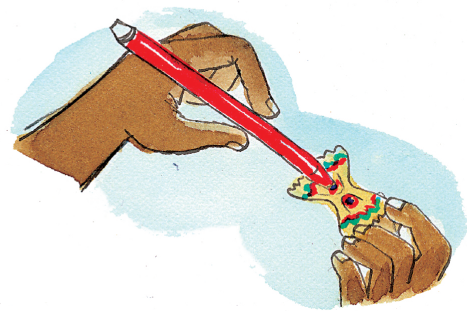
| What you need |
|
1. Decorate seven pieces
of bow-tie pasta using
the coloured markers.
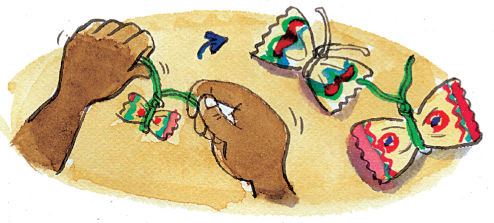
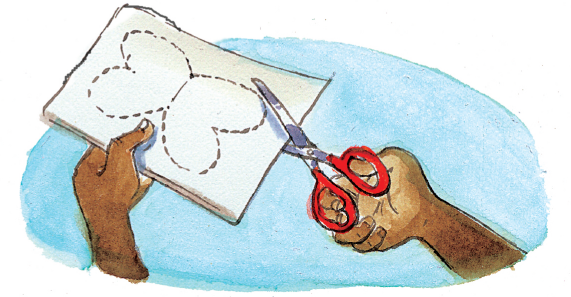
2. Bend each twist tie around a pasta bow
tie. Then twist the ends together to make
antennae.
3. Cut out two identical butterfly shapes
from the cardboard.
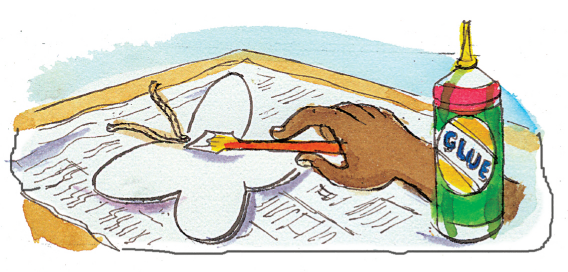
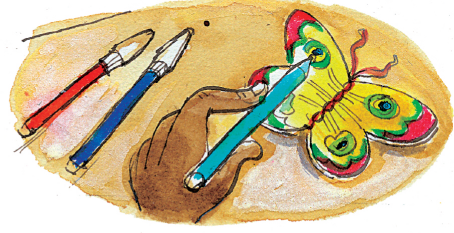
4.Glue two pieces of string to form
antennae on the head of one of the
cardboard butterflies.
5. Decorate both butterflies.
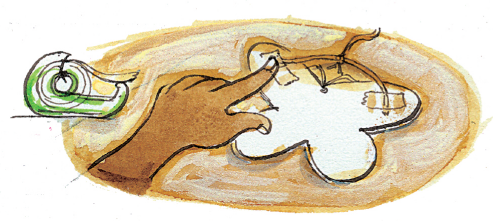

6. Stick the ends of a piece of string to the
wings of one cardboard butterfly.
7. Cut pieces of string of various lengths. Tie
one end of each piece of string around
the base of the antennae of a different
pasta butterfly. Tie the other end to a
hanger.

Circle the letter next to the correct answer. If you are not sure what the answers are, go back and read the instructions again.

| What kind of text is the passage on how to make a butterfly mobile? | |||
| A | A recipe | ||
| B | Instructional text | ||
| C | A dialogue | ||
| D | A story | ||
| Why did the person who wrote the instructions choose bow-tie pasta for making the mobile? | |||
| A | The pasta can easily be cut. | ||
| B | The pasta can easily be glued together. | ||
| C | The pasta has the shape of a butterfly. | ||
| D | The pasta is colourful like a butterfly. | ||
| Based on what you know about insects, what are antennae used for? | |||
| A | To hold food | ||
| B | To feel, hear and smell | ||
| C | To fly | ||
| D | To digest food | ||
| The writer tells us to “Glue the backs of the two cardboard butterflies together to cover the ends of the string and the tape.” What does the word “cover” mean here? | |||
| A | To hide | ||
| B | To keep warm | ||
| C | To tighten | ||
| D | To spread over | ||

What do you need to do after you have twisted the ties to make antennae?


